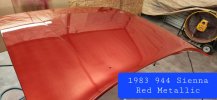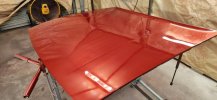Prprop143
Promoted Users
Hey guys,
I just finished 3 coats of the Euro 2020 and I developed some very small bubbles which appear to be Solvent pop. They showed up on the 3rd coat and my question is can I try and sand them out during the color sand process? This is my first time using this clear and wanted some feedback on how long to wait before color sanding.
I finished spraying last night and we will be having Temps in the high 80's for the next week.
Thanks for any help!
I just finished 3 coats of the Euro 2020 and I developed some very small bubbles which appear to be Solvent pop. They showed up on the 3rd coat and my question is can I try and sand them out during the color sand process? This is my first time using this clear and wanted some feedback on how long to wait before color sanding.
I finished spraying last night and we will be having Temps in the high 80's for the next week.
Thanks for any help!


